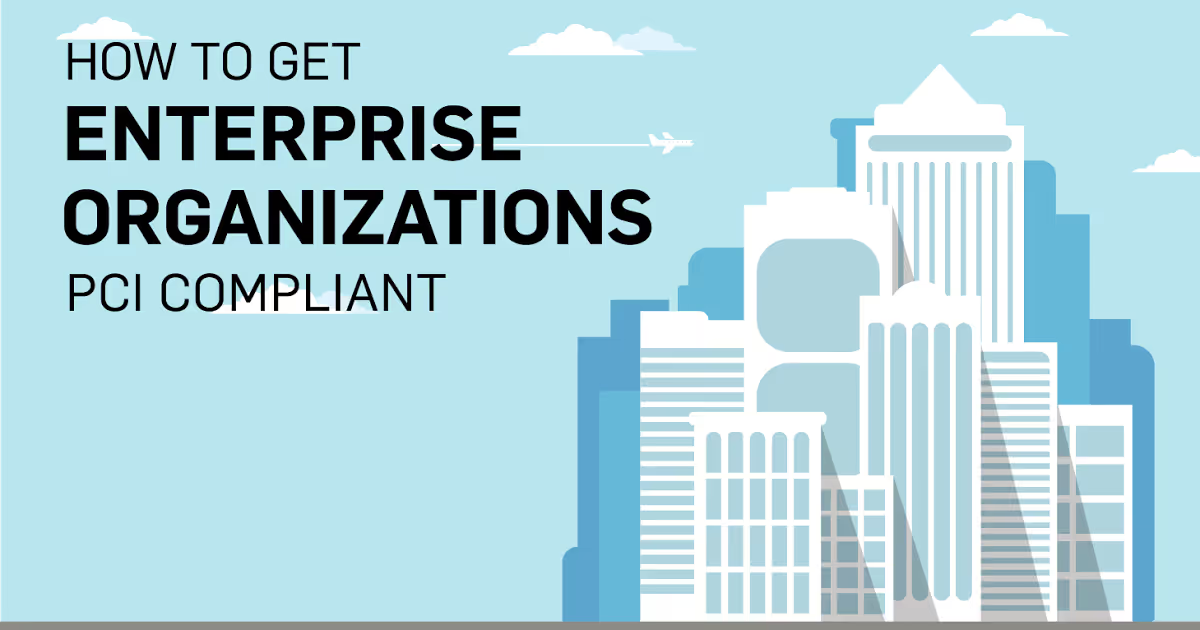5 PCI Compliance Tips for Enterprise Organizations
Here are 5 tips for enterprise organizations to get PCI compliant more efficiently.

Here are 5 tips for enterprise organizations to get PCI compliant more efficiently.

When it comes to PCI compliance, enterprise organizations have their own unique challenges in managing data security.
One problem enterprise organizations have is the large amounts of card data they store and transmit. Due to their larger environment, the organization’s reaction time to policy changes and security vulnerabilities is often slower.
Because there are often many different entities and groups involved in management, contradictory decisions can be made with security, causing confusion. It’s also not always apparent which group is supposed to be in charge of which element of security, which can create confusion and often ends up with a security task not getting done
See also: The Importance of the PCI DSS: Why You Should Get Compliant
Enterprises will often have multiple merchant IDs. As a result, there can be a lot of confusion when it comes to delegating responsibilities. For example, franchises may often have difficulties coordinating with each store/location, making sure every shop is PCI compliant.
You need to standardize PCI policies throughout your organization. I highly recommend using an employee manual that shows what each group/location is to do with PCI. A manual will help standardize the PCI policies, preventing confusion and policy inconsistencies. This helps the locations feel more ownership. Employees in large organizations often aren’t fully aware of what they have to do from a PCI perspective.
Enterprise organizations should also have a self-auditing process to make sure security practices are set in place throughout the year. This keeps organizations from turning PCI compliance into an annual PCI audit.
Note: Having a self-auditing process is critical and is a new requirement for Service Providers to do quarterly (12.11).
See also: 6 Ways to Make Data Security Consistent in Your Business
With enterprise organizations comes multiple locations and departments. For many, coordinating with all these different groups is difficult.
One issue held by many enterprise organizations with multiple locations is they may never get out to said locations to help their groups and show them what’s required. Because of this, smaller groups within the organizations don’t always have the proper knowledge of what the organization wants in data security.
Many enterprise organizations think that by giving PCI responsibilities to their IT department, that’s enough. You may think that handing it over to your IT head will be sufficient to get compliant.
However, PCI compliance is a lot bigger and more complex than you may think. IT can’t handle PCI responsibilities on their own; it will soon overwhelm them. You’ll want to have an employee (or a group of employees) take charge of PCI compliance, which should be their sole responsibility. There also needs to be someone to remind employees to get compliant.
One of the biggest problems enterprise organizations have is that they simply don’t know that much about PCI compliance. And because they don’t know it or understand it, it doesn’t get done.
Organizations need to train employees on PCI compliance and data security and make it a part of their daily routine. Keeping data secure should always be on the back of their minds as they do their jobs.
See also: Employee Data Security Training: What You Should Do
One way to further protect your data and your organizations is to make secure backups in your data and processes.
For example, say your main POS system goes down. It’s a good idea to have backup systems to make sure your organization doesn’t lose business. Just make sure these backups are also PCI compliant and secure.
Another reason to back up your data is to combat ransomware. Having a backup of data makes ransomware holding data hostage much less threatening.
Here are a few more things to consider in getting PCI compliant:
Remember that getting compliant takes a team effort. You need to work with all of your departments, employees, and locations.